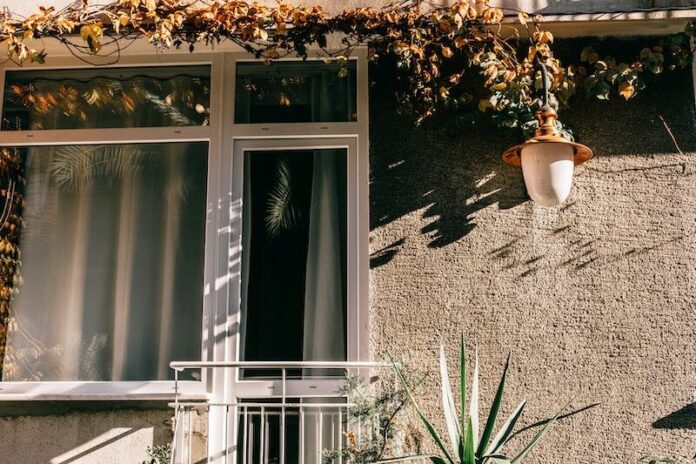A new portal of COVID-19 relief has opened for the west county community. West county residents can now apply to receive rental and utility assistance through West County Community Services (WCCS) and River to Coast Children’s Services (RCCS).
“People are frazzled emotionally, they’re stressed economically and getting people the support they need in the most direct manner, lowest-barrier-possible way is, at least in our experience and I think in most others, the most effective way to help folks,” WCCS Executive Director Tim Miller said.
This is the second round of rental and utility aid from WCCS, and it lasts from the beginning of February to June 30 — or until the $407,000 in funding allocated from the Sonoma County Community Development Commission (CDC) runs out, he said. The WCCS website said the program ends April 30, but Miller said this is simply the month the nonprofit expects the money will be spent, since WCCS received similar funding in a previous round in 2020 that only lasted from October to December.
“We’re going to keep assisting people until it does run out,” he said.
WCCS is one of several providers geographically spread out in Sonoma County offering this program, each with a case manager.
WCCS subcontracted RCCS for the first round and the current round to do outreach and work with Spanish-speaking households seeking to apply, as RCCS has a stronger relationship with the community, Miller said. English speakers are encouraged to apply through WCCS and Spanish-speakers are encouraged to apply through RCCS, he said.
Miller said the program can help pay for missed rent and missed utility payments as far back as March of 2020, so long as the applicant can provide documents demonstrating they are qualified as low-income and that their financial challenges are related to the COVID-19 pandemic.
Miller said often people have shown their struggle is COVID-related by providing a letter of verification from their employer or paystubs demonstrating their employment until a pandemic-related closure, for example.
The organization contacts the landlord to confirm the applicant is struggling to afford their shelter and both the landlord and the tenant must sign a statement that this is true, Miller said. WCCS then directly pays the rent to the landlord or utilities payments to PG&E or Sonoma Clean Power after obtaining the documentation and the funding is never passed along to the tenant directly.
While the previous round’s applicants were “by far more renters,” Miller said landlords qualify if they can also document they classify as low income and can only receive direct payment from the program if one of their tenants did not pay rent.
He said he expects WCCS to assist a similar number of community members as in the previous round when Sonoma County granted the agency $350,000 in October from a pot of $2.37 million, according to an Oct. 5 press release from the County Administrator’s Office.
Miller said that in the first round, WCCS was able to aid 151 households, or 396 people, with an average $2,400 for rent and utilities. The county dedicated $2.2 million in community development block grant funding to this second round of rent and utilities assistance, said Chuck Mottern, the CDC’s homeless services funding coordinator.
Miller said WCCS instructs applicants to talk to the case manager about their needs to determine how much financial aid they will receive to avoid occasions where some may have “an incentive to jack up the need.”
The most crucial of eligibility criteria is that residents who received funding from any local nonprofits participating in the earlier round from October to December do not qualify for the current round of aid, Miller said.
However, people are still eligible if they received rental and utility assistance before the program that began in October, such as stimulus checks or other aid from a community provider.
Miller said another common misunderstanding among applicants is some do not realize the program does not provide mortgage relief, only rental and utility relief.
RCCS Executive Director Soledad Figueroa said some Spanish-speaking applicants have additional concerns when asking questions about the application.
The rental and utilities assistance program is available to undocumented residents, which is a common question she hears, in addition to whether the assistance will count against them when applying for a new immigration status — also known as the public charge ground of inadmissability.
Figueroa said she understood the program’s rental and utilities assistance to be a kind of COVID-19-related relief that does not count toward public charge.
Applicants are commonly locals who were laid off during the pandemic, such as restaurant and hospitality workers and domestic workers, as well as parents who stepped back from their jobs to take care of their children now doing school from home, according to Miller.
Tourism and agriculture are some of the most prominent businesses of the lower Russian River area, he said, “so all the things that go along with those are the reasons people need assistance.”
“Programs just need to be as low-barrier as possible to assist the most people most efficiently. And this is a low barrier program,” Miller said, as Sonoma County approaches a full year of life in the pandemic. “We’re able to help people very quickly and stay housed, stay sane, stay less traumatized with a speed, in a responsible manner, to keep them in their homes. And that’s the most important thing.”









